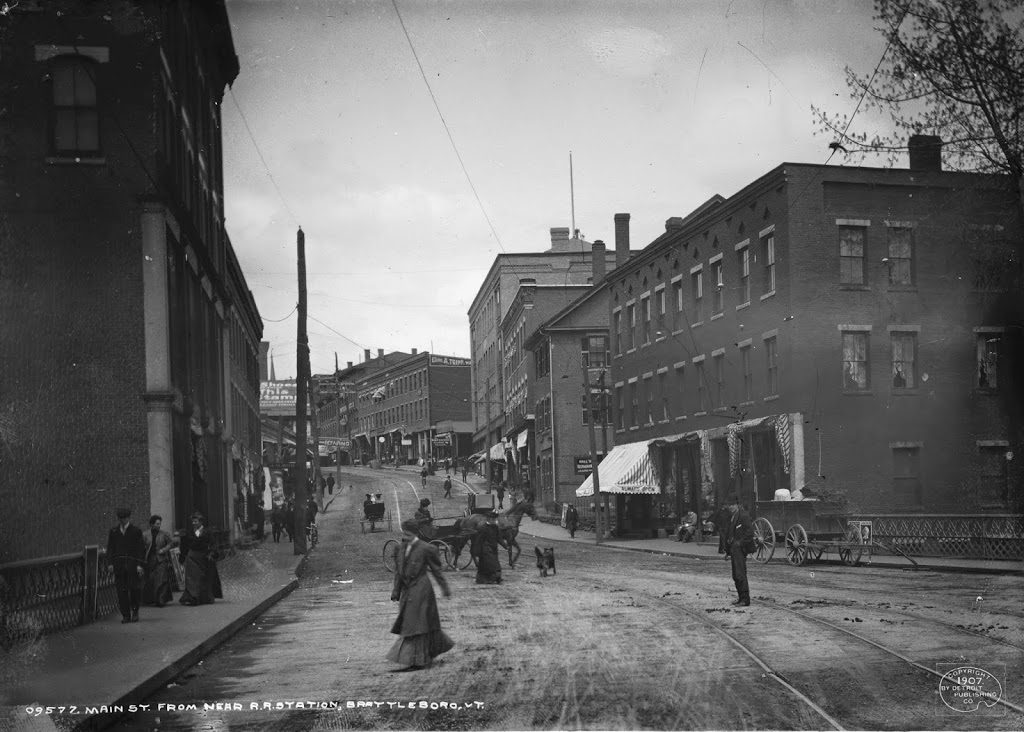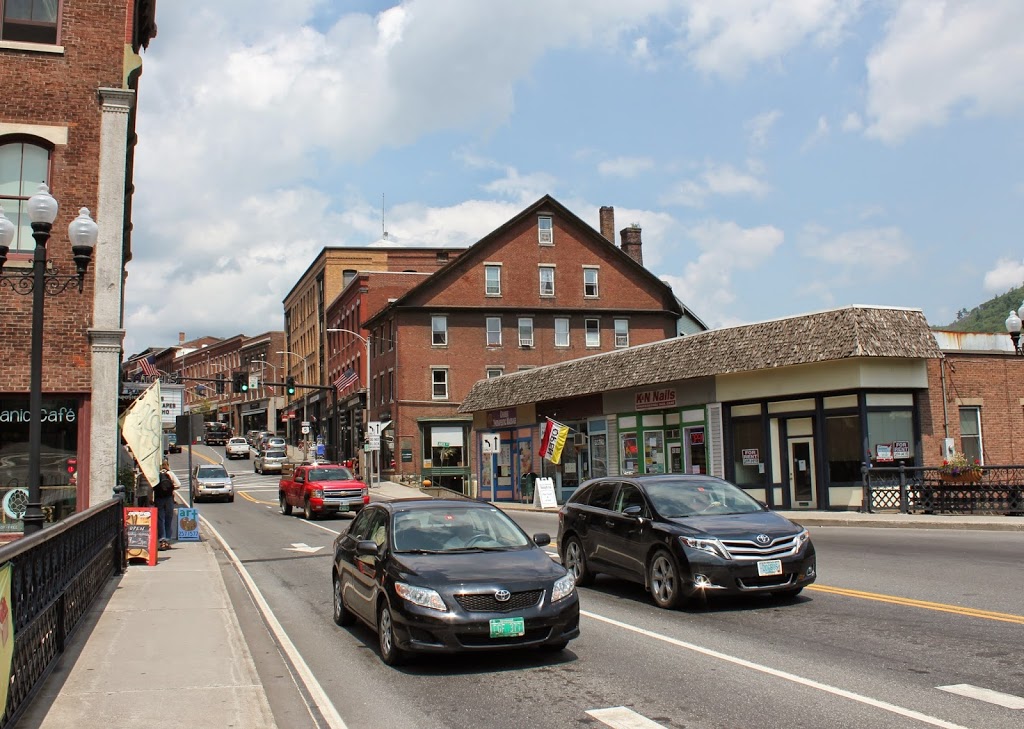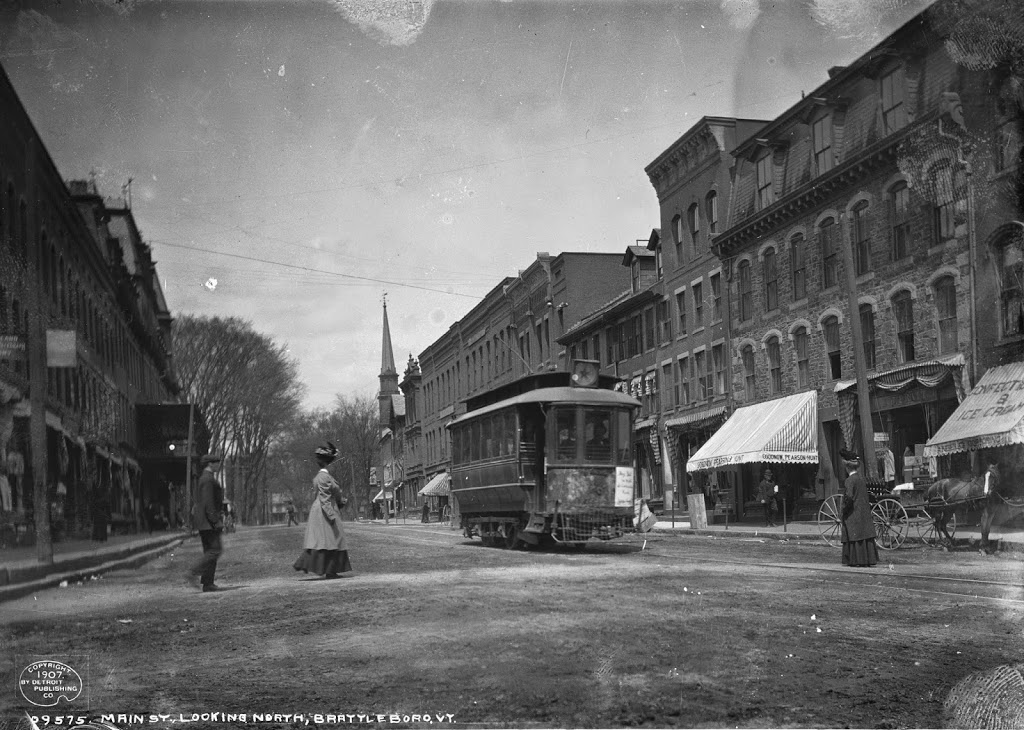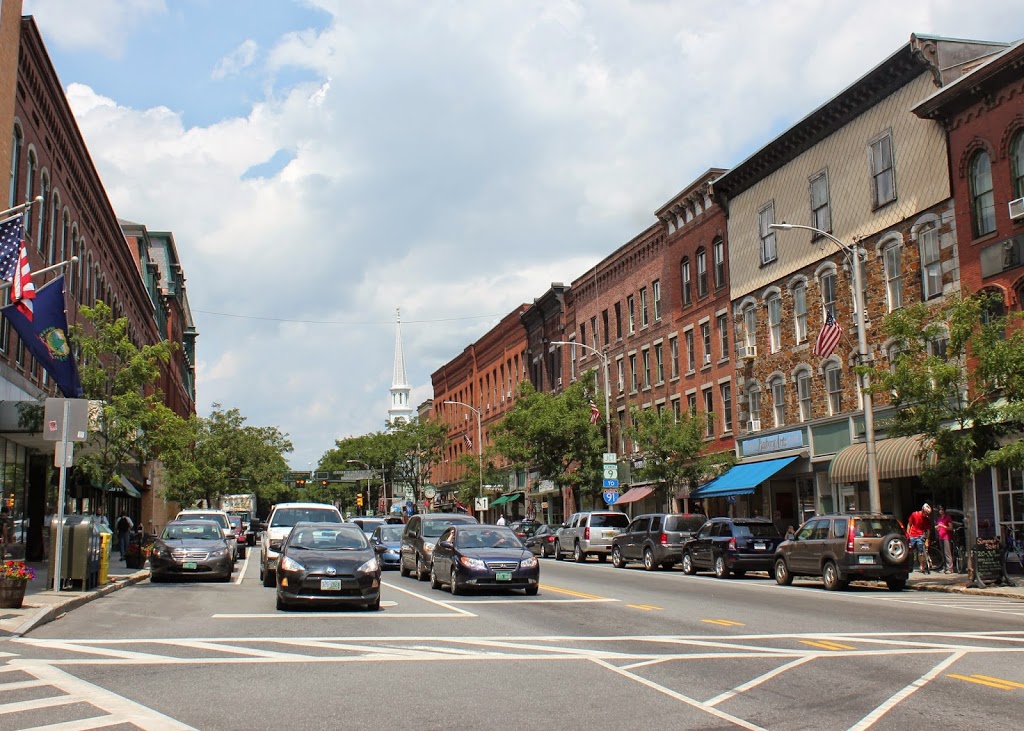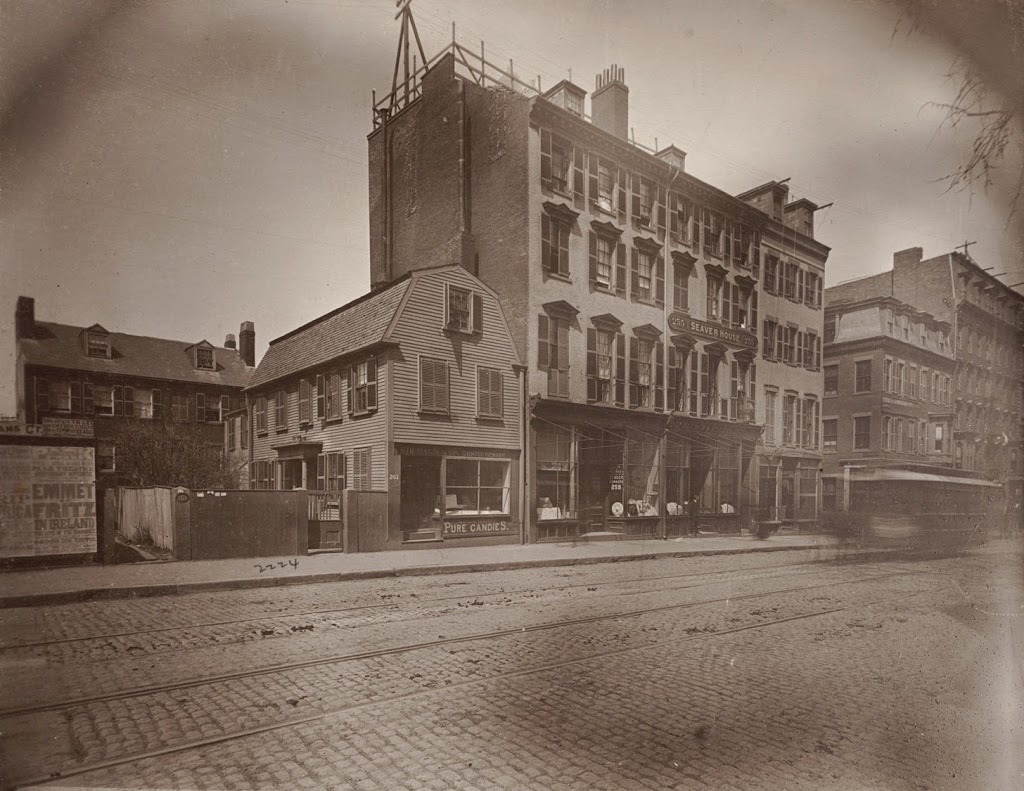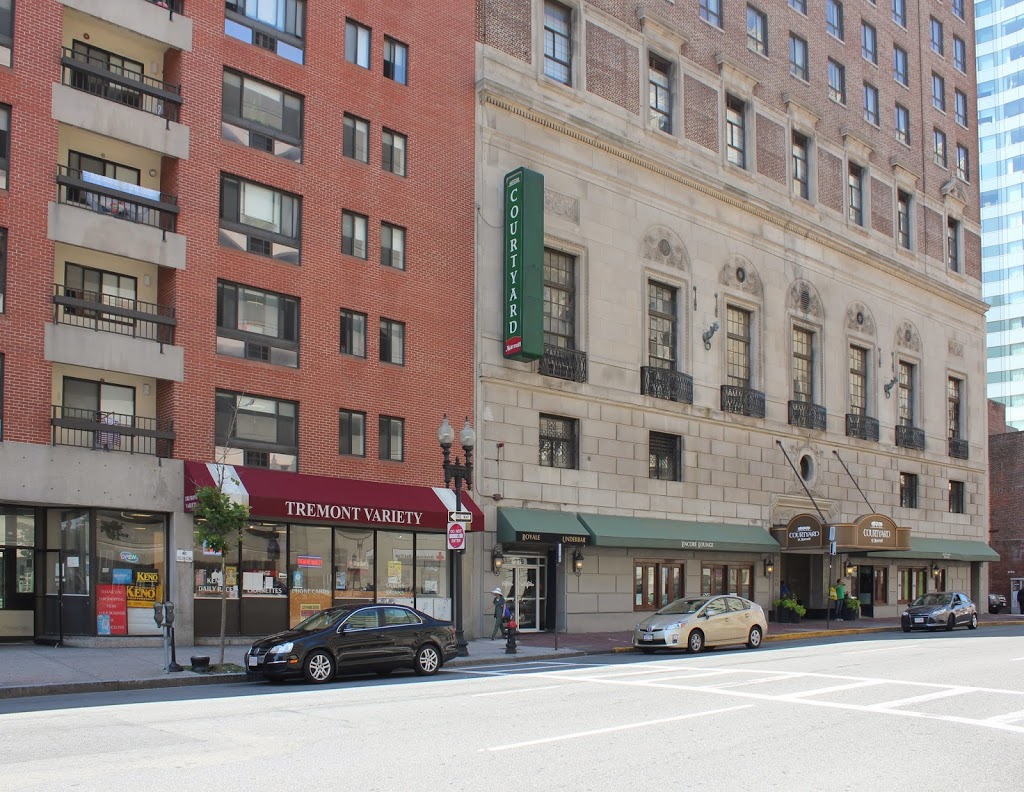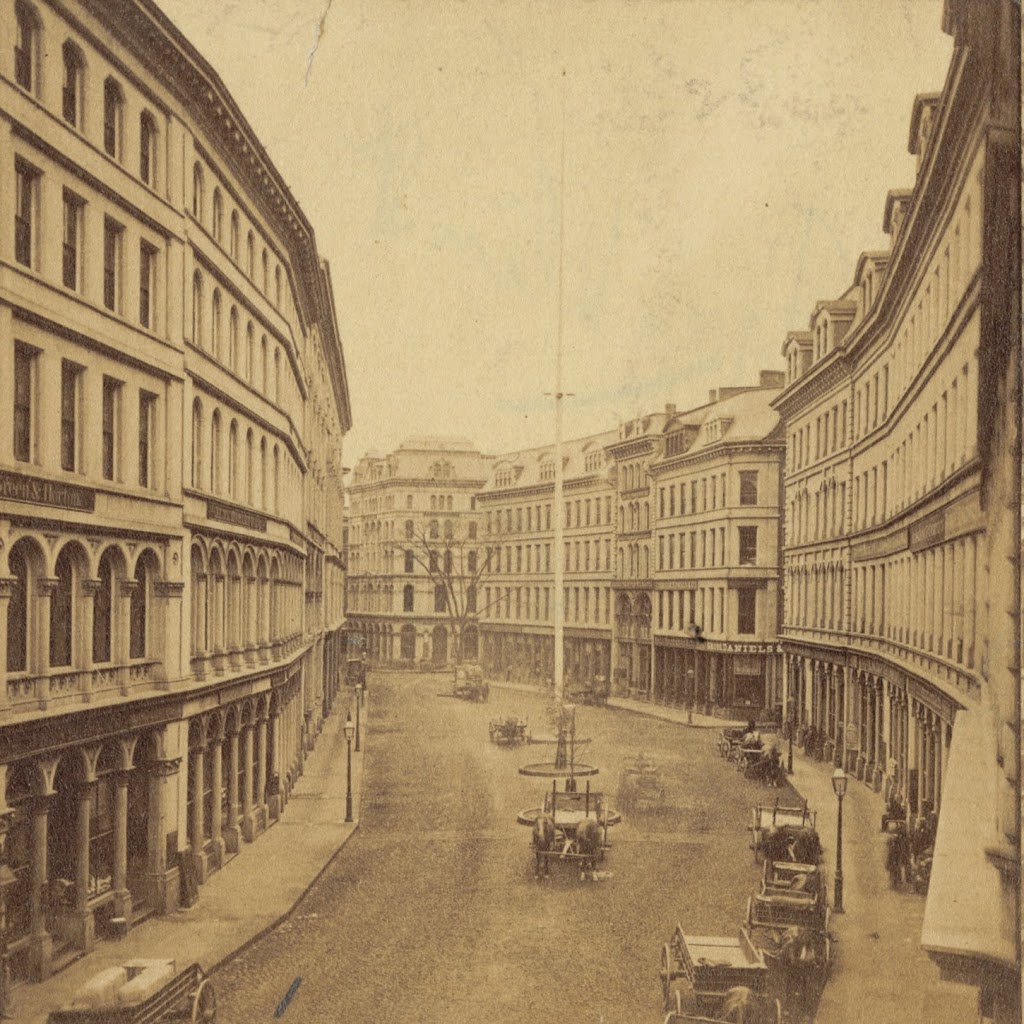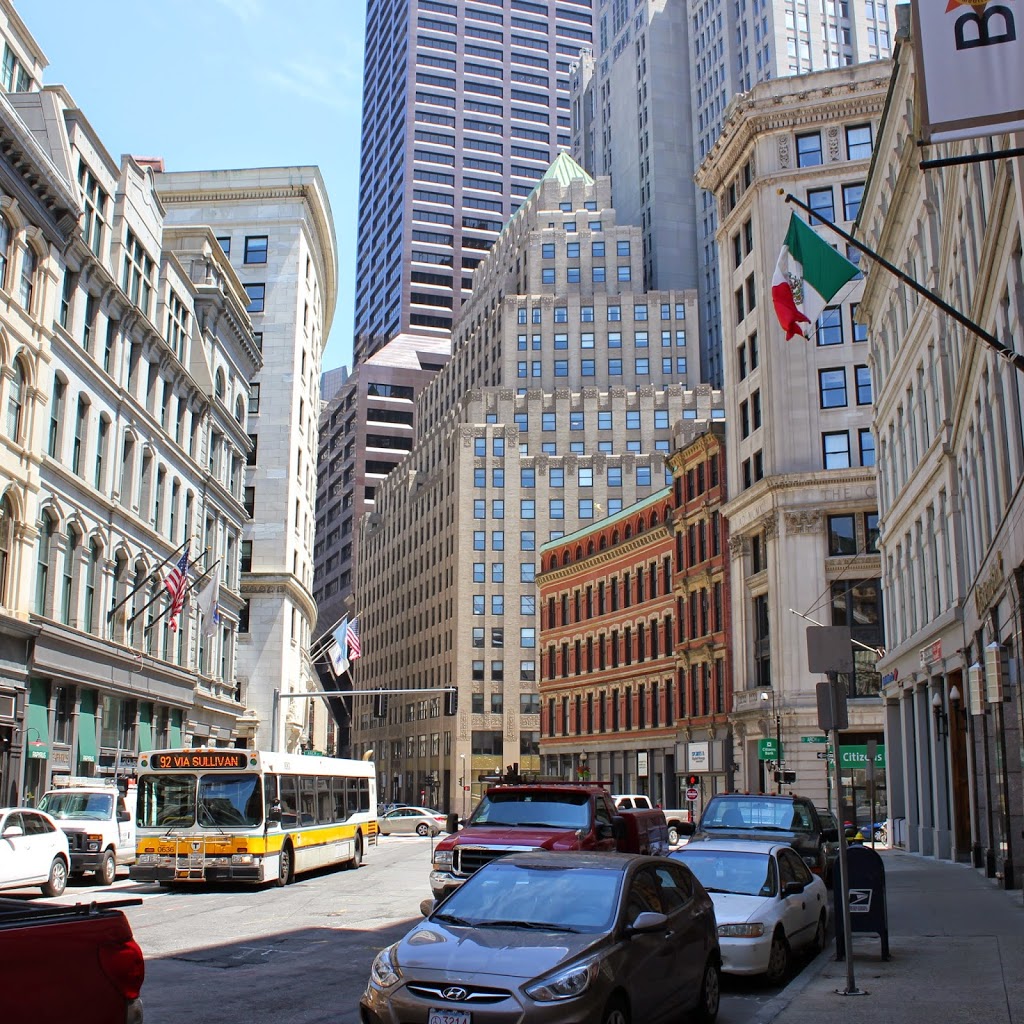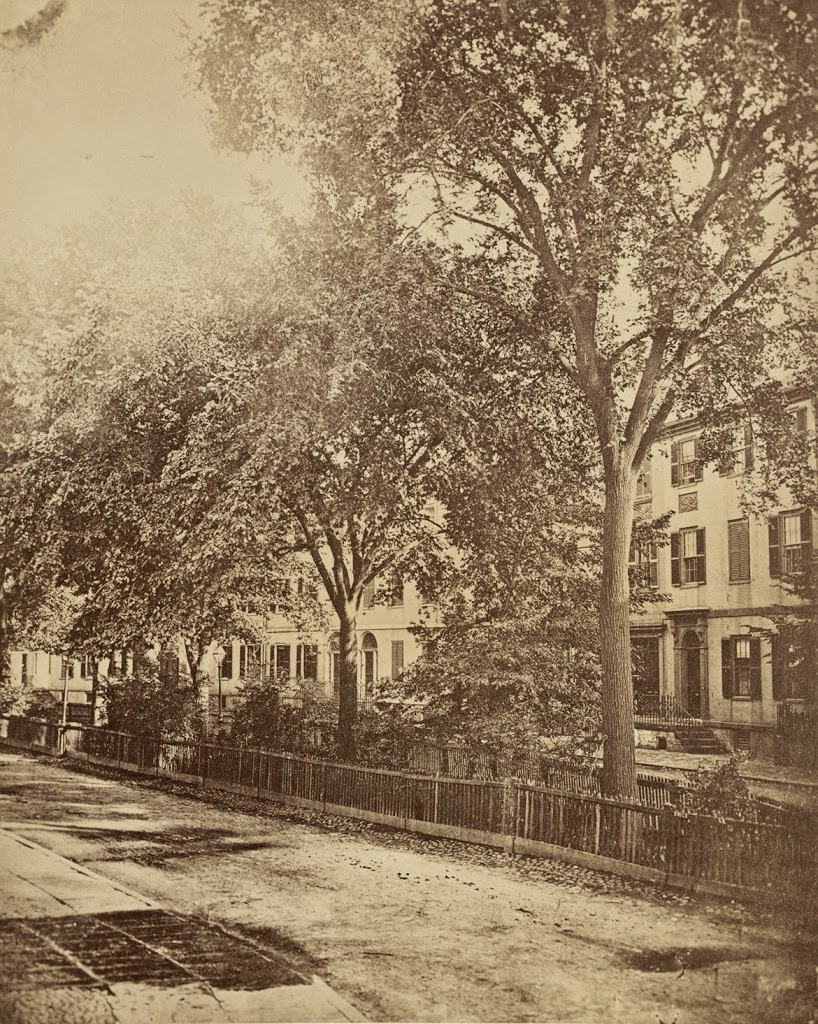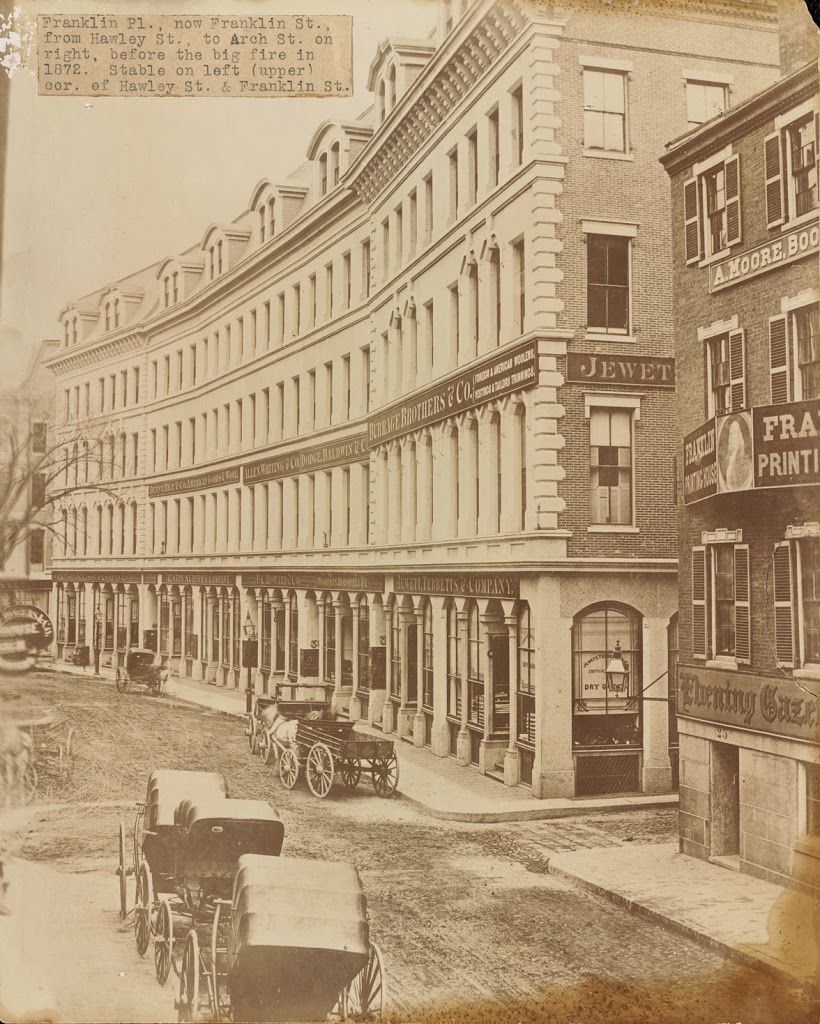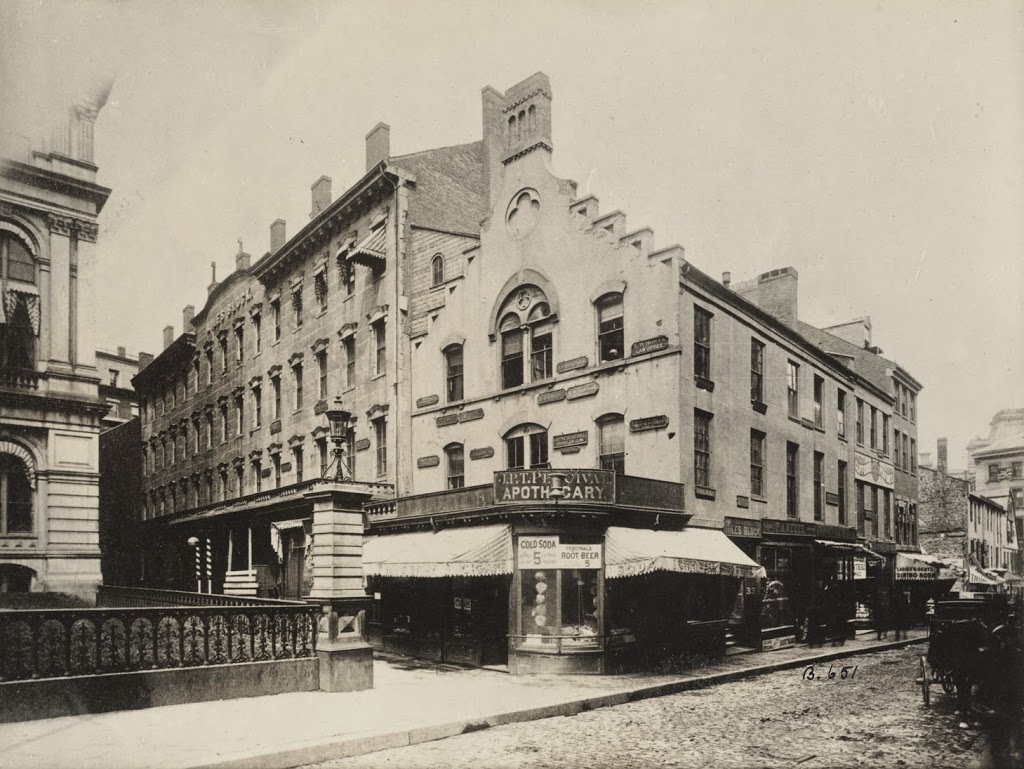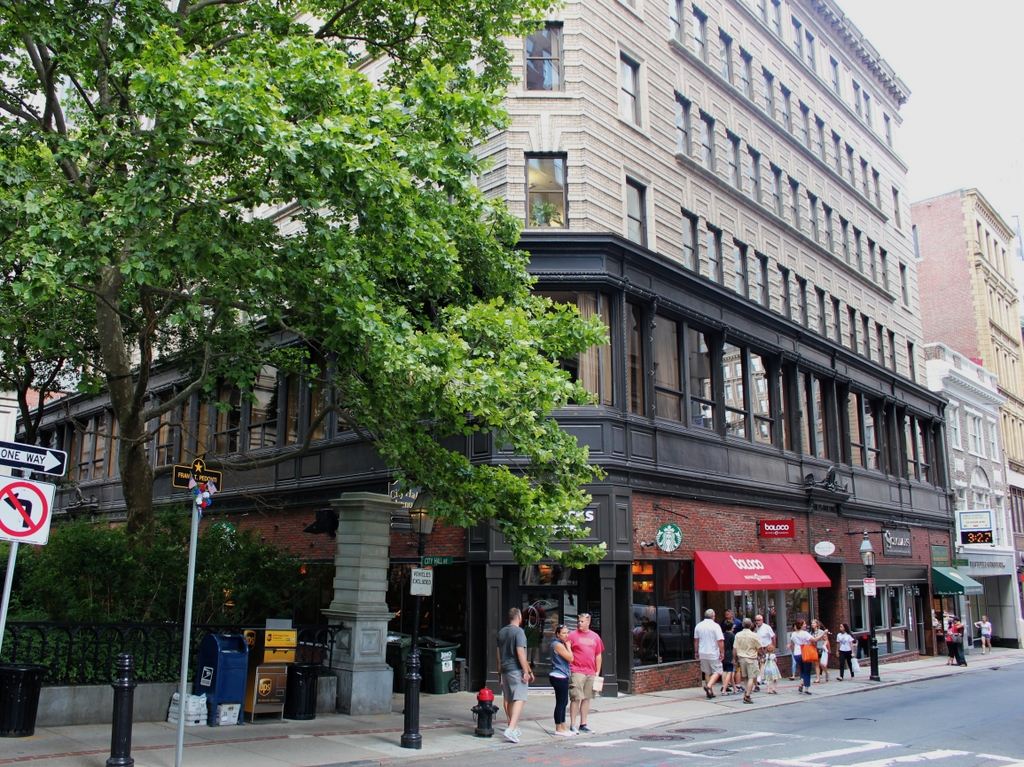Looking up Main Street in Brattleboro from the corner of Canal Street, around 1907. Image courtesy of the Library of Congress, Detroit Publishing Company Collection.
The scene in 2014:
This view gives a good overview of the architecture on the east side of Main Street, very little of which has changed in the past century. Many of the buildings were even fairly old when the first photo was taken, including the circa 1850 Van Doorn/Culver Block in the center of the 2014 photo. Beyond it are several commercial blocks from around the turn of the century, and the oldest buildings are at the top of the hill and date to around 1840-1845, making them probably the oldest commercial buildings in downtown. With the exception of the building on the right-hand side in the foreground of the 1907 photo, all of the buildings still exist today, forming part of the Downtown Brattleboro Historic District.

